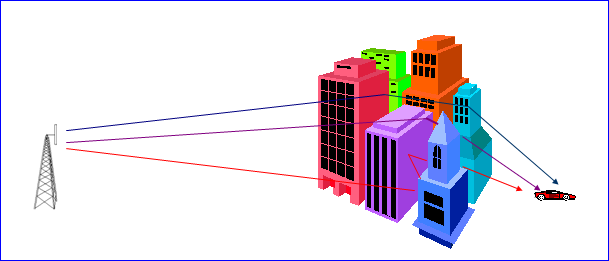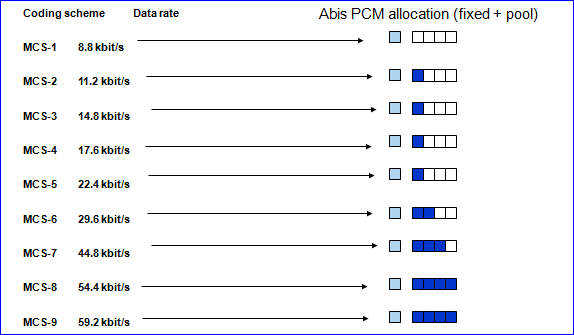America Movil Signs Deal to Take Control of Telekom Austria
Maxico's America Movil is launching a takeover bid for the Telekom
Austria Group with secure an agreement with the Austrian government's own
holding company IAG.
America Movil and ÖIAG have initially signed a shareholders’
agreement to effectively pool their stakes in the telecoms company into a
single syndicate.
America Movil already owns 26.4% of the company, while the
government owns 28.4% of the telco.
Now that the agreement, which had been expected, has been signed,
the two companies jointly control more than 30% of the shares and are required
by Austrian stock market rules to launch a takeover bid for the company.
Subject to the closing of the takeover bid, the two shareholders
will also pump an additional EUR1 billion into the company to help fund network
upgrades.
America Movil will take over management of the company, although
it is expected that the Austrian government would, through ÖIAG remain the
larger of the two shareholders. ÖIAG also has the right to nominate the CEO and
Chairman of the company.
Telekom Austria currently operates in Austria, Belarus, Bulgaria,
Croatia, Serbia, Macedonia, Liechtenstein and Slovenia.
Post Date 24-April-2014
SS7
Definition:
Signaling System 7 (SS7) is an architecture for performing out-of-band signaling in support of the call-establishment, billing, routing, and information-exchange functions of the public switched telephone network (PSTN). It identifies functions to be performed by a signaling system network and a protocol to enable their performance.
What is Signaling?
Signaling refers to the exchange of information between call components
required to provide and maintain service.
Long Code in CDMA
Long code in CDMA is a chip sequence which is 240 chips long, which repeats every 41.4 days. Its primary purpose is to assist in spreading the signal, to make spread spectrum work more efficiently. The Long code used on the reverse link is usually modified using the phone's ESN when in a call. See Long Code Mask.
Fading
FADING in Telecomunication
•
The
communication between the base station and mobile station in mobile systems is
mostly non-LOS.
•
The LOS path
between the transmitter and the receiver is affected by terrain and obstructed
by buildings and other objects.
•
The mobile
station is also moving in different directions at different speeds.
•
The RF
signal from the transmitter is scattered by reflection and diffraction and
reaches the receiver through many non-LOS paths.
This non-LOS path causes
long-term and short term fluctuations in the form of log-normal fading and
rayleigh and rician fading, which degrades the performance of the RF channel
LONG TERM FADING
•
Terrain configuration & man made
environment causes long-term fading.
•
Due to various shadowing and terrain
effects the signal level measured on a circle around base station shows some random
fluctuations around the mean value of received signal strength.
•
The long-term fades in signal
strength, r, caused by the terrain configuration and man made environments form
a log-normal distribution, i.e
the mean received signal strength, r, varies log-normally in dB if the signal
strength is measured over a distance of at least 40l.
•
Experimentally it has been determined
that the standard deviation, s,
of the mean received signal strength, r, lies between 8 to 12 dB with the higher s generally found in large urban areas.
RAYLEIGH FADING
•
This phenomenon is due to multipath
propagation of the signal.
•
The Rayleigh fading is applicable to
obstructed propagation paths.
•
All the signals are NLOS signals and
there is no dominant direct path.
•
Signals from all paths have comparable
signal strengths.
•
The instantaneous received power seen
by a moving antenna becomes a
random variable depending on the location of the antenna.
RICEAN FADING
•
This phenomenon is due to multipath
propagation of the signal.
•
In this case there is a partially
scattered field.
•
One dominant signal.
•
Others are weaker.
DOPPLERS SHIFT
•
Dopplers shift is the shift in
frequency due to the motion of mobile from the actual carrier frequency.
•
Consider a mobile moving at a constant
velocity v along a path segment having a length d between points X and Y while
it receives signal from a remote source S.
•
The Change in frequency due to dopplers shift is given by
fd
= (v/l) * cos(f)
•
It can be seen from the above equation
that if the mobile is moving towards the direction of arrival of wave the
dopplers shift is positive I.e. the apparent received frequency is increased. .
EGDE - Enhanced Data rates for GSM Evolution
(E)GPRS Network Infrastructure
How to calculate what
•
No. of EGPRS resources used in 1
sector * No. of sectors : 2 x 3
•
No. of time slot/sector * no of time slot used
for EDAP :- 2 * 3 = 6
•
So total time slots per site 6 + 6 =
12
•
1 NSEI support 256 time slot with
upgrade % as 10 so total no of time slots which can be equipped is 256 - 10% of
256 = 230.4 ~ 230
•
So no. of sites per NSEI is 230/12 =
19.16 ~ 19
•
So no NSEI required / BSC : 100 / 19 = 5.2 +1 (for future use) ~ 6
•
2 NSEI supports 1 BCSU so no. of PCU
required : 6/2 = 3
•
No. of NSEI required is equivalent to
the no. of Gb link = 3
•
On 1 E1 we can get 31x64 = 1984 , so
access rate can be given by 1 E1 = 1984/ access rate (256) = 1984 / 256 ~ 7
Transmission requirement for EGPRS
coding schemes in Abis interface
EDGE modulations
|
Scheme
|
Modulation
|
Maximum rate [kb/s]
|
|
MCS-9
|
8PSK
|
59.2
|
|
MCS-8
|
54.4
|
|
|
MCS-7
|
44.8
|
|
|
MCS-6
|
29.6 / 27.2
|
|
|
MCS-5
|
22.4
|
|
|
MCS-4
|
GMSK
|
17.6
|
|
MCS-3
|
14.8 / 13.6
|
|
|
MCS-2
|
11.2
|
|
|
MCS-1
|
8.8
|

EDAP utilization
•
6 EGPRS RTSLs (Dedicated + Default
territory)
•
50 % utilization assumed (3 Data Erlangs
traffic)
•
On average 3 RTSLs used
•
RTSLs use MCS7 (44.8 kbit/s) with
average C/I=13dB and throughput 30kbit/s
•
Effective data rate factor excluding
retransmissions over the air-interface is 30/44.8 ~ 0.7
•
Slave group utilization is 0.7*0.5= 0.35
Subscribe to:
Posts (Atom)





